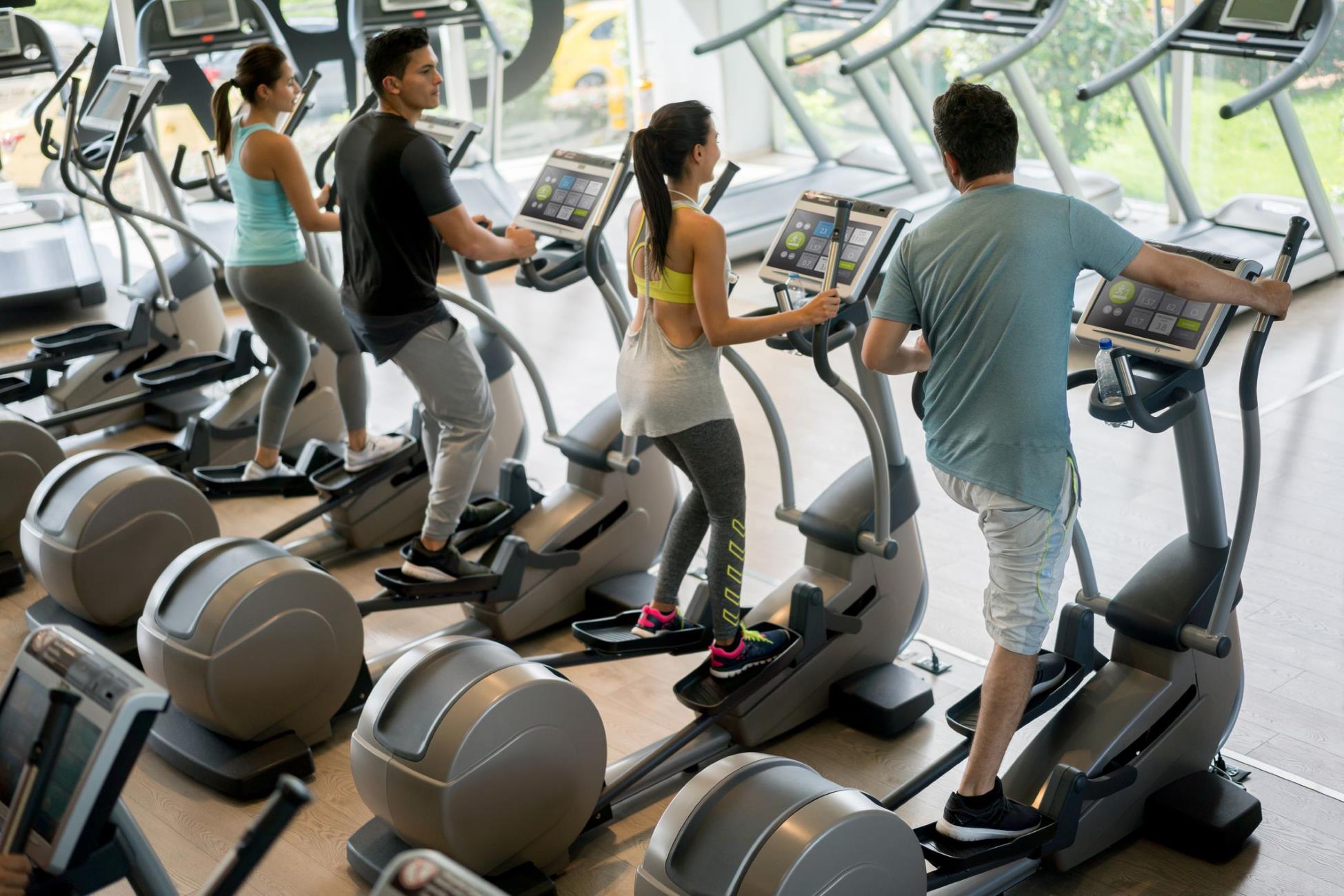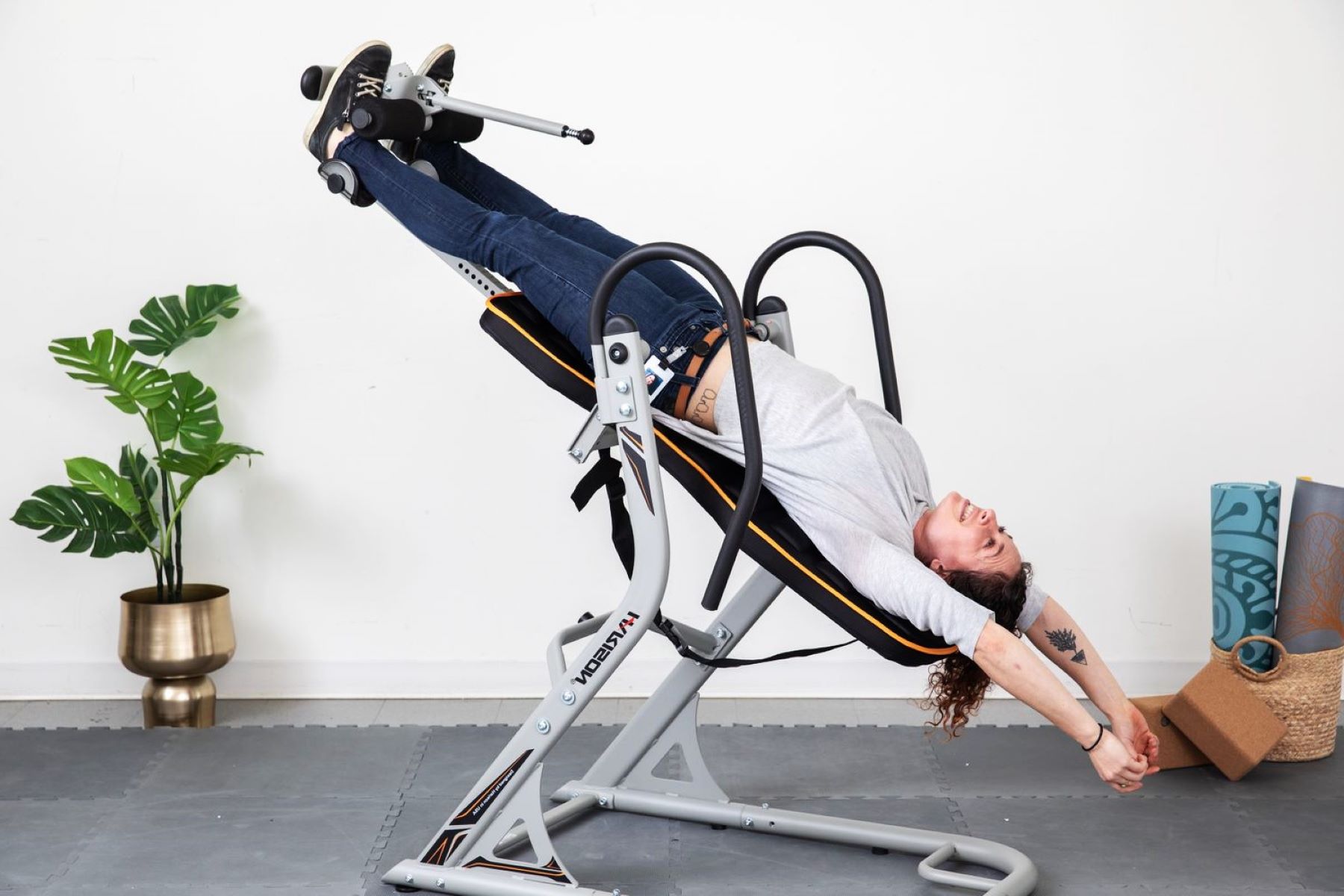Home>Health & Nutrition>Recovery>9 Post-run Recovery Methods To Incorporate Into Your Routine


Recovery
9 Post-run Recovery Methods To Incorporate Into Your Routine
Published: February 28, 2024
Enhance your post-run recovery with these 9 effective methods. Incorporate these strategies into your routine to optimize your body's recovery process.
(Many of the links in this article redirect to a specific reviewed product. Your purchase of these products through affiliate links helps to generate commission for Therunningadvisor.com, at no extra cost. Learn more)
Table of Contents
Importance of Post-Run Recovery
Post-run recovery is a crucial yet often overlooked aspect of a runner's training regimen. While the exhilaration of completing a run can be invigorating, it's essential to prioritize recovery to optimize performance, prevent injuries, and maintain overall well-being. Engaging in recovery practices can significantly impact a runner's ability to bounce back from intense workouts and races, ultimately enhancing their long-term progress and enjoyment of the sport.
After a run, the body undergoes a series of physiological changes, including muscle fatigue, dehydration, and glycogen depletion. Failing to address these factors can lead to prolonged muscle soreness, decreased performance, and an increased risk of overuse injuries. This is where post-run recovery steps in to mitigate these effects and promote efficient healing and adaptation.
By incorporating post-run recovery methods into your routine, you can experience a myriad of benefits, such as:
-
Enhanced Muscle Repair: Engaging in recovery practices such as stretching, foam rolling, and massage can aid in the repair of micro-tears in the muscle fibers, promoting faster recovery and reducing the likelihood of overuse injuries.
-
Improved Flexibility and Range of Motion: Stretching and flexibility exercises post-run can help maintain and improve the body's flexibility, preventing muscle tightness and imbalances that may arise from repetitive running motions.
-
Replenished Hydration and Nutrient Stores: Proper hydration and nutrition post-run are essential for replenishing fluid and electrolyte losses, as well as restoring glycogen stores in the muscles, ensuring optimal recovery and preparation for future workouts.
-
Mental and Emotional Restoration: Post-run recovery provides an opportunity for mental and emotional rejuvenation, allowing runners to unwind, reflect on their performance, and alleviate stress, ultimately contributing to a balanced and sustainable running routine.
In essence, prioritizing post-run recovery is not a luxury but a necessity for runners of all levels. By acknowledging the significance of recovery and integrating it into your training routine, you can optimize your running performance, reduce the risk of injuries, and cultivate a sustainable and fulfilling running experience.
Stretching and Flexibility Exercises
After completing a run, engaging in stretching and flexibility exercises is paramount for promoting muscle recovery and maintaining overall flexibility. These exercises play a pivotal role in preventing muscle tightness, enhancing range of motion, and reducing the risk of injuries. Incorporating a post-run stretching routine can significantly contribute to the overall well-being of a runner. Here are some effective stretching and flexibility exercises to incorporate into your post-run recovery routine:
Dynamic Stretching:
Dynamic stretching involves active movements that mimic the motions of running to prepare the muscles for activity. Post-run, dynamic stretches such as leg swings, walking lunges, and high knees can help improve flexibility and mobility while promoting blood flow to the muscles. These movements aid in reducing muscle stiffness and increasing the range of motion, thereby enhancing overall performance and recovery.
Static Stretching:
Static stretching involves holding a stretch position for a prolonged period, targeting specific muscle groups. Post-run, incorporating static stretches for major muscle groups such as the quadriceps, hamstrings, calves, and hip flexors can help alleviate muscle tension and promote relaxation. These stretches aid in maintaining muscle length and flexibility, ultimately contributing to improved running mechanics and reduced muscle soreness.
Yoga and Pilates:
Practicing yoga or Pilates post-run can be highly beneficial for enhancing flexibility, balance, and core strength. These disciplines incorporate a variety of poses and movements that target multiple muscle groups, promoting overall body awareness and alignment. Additionally, the focus on controlled breathing in yoga and Pilates can aid in relaxation and stress reduction, complementing the physical benefits of the exercises.
Foam Rolling:
Foam rolling, also known as self-myofascial release, involves using a foam roller to apply pressure to specific muscle groups, releasing tension and improving flexibility. Post-run, incorporating foam rolling into your routine can help alleviate muscle tightness and trigger points, enhancing blood circulation and promoting muscle recovery. Targeting areas such as the calves, quadriceps, and IT bands can be particularly beneficial for runners.
Mobility Drills:
Incorporating mobility drills post-run can help improve joint mobility and stability, contributing to overall movement efficiency and injury prevention. Exercises such as hip circles, ankle rotations, and shoulder mobility drills can aid in maintaining optimal joint function and reducing the risk of overuse injuries associated with running.
Incorporating these stretching and flexibility exercises into your post-run routine can have a profound impact on your overall recovery and long-term performance as a runner. By prioritizing flexibility and mobility, you can enhance your body's resilience, reduce the likelihood of injuries, and cultivate a sustainable running practice.
Hydration and Nutrition Tips
Proper hydration and nutrition play a pivotal role in the post-run recovery process, influencing the body's ability to replenish essential nutrients, facilitate muscle repair, and restore energy levels. After completing a run, it's crucial to prioritize hydration and nourishment to support optimal recovery and prepare the body for future workouts. Here are some valuable hydration and nutrition tips to incorporate into your post-run routine:
Hydration:
Hydration is fundamental for maintaining fluid balance, regulating body temperature, and supporting various physiological functions. After a run, it's essential to replenish fluid losses to prevent dehydration and promote efficient recovery. Aim to consume water or electrolyte-rich beverages to rehydrate and restore the body's fluid balance. Monitoring urine color can serve as a simple indicator of hydration status, with pale yellow urine signifying adequate hydration.
Nutrition:
Post-run nutrition plays a vital role in replenishing glycogen stores, repairing muscle tissue, and facilitating recovery. Consuming a balanced meal or snack that combines carbohydrates, protein, and healthy fats within the first hour after a run can optimize the body's recovery process. Carbohydrates aid in replenishing glycogen stores, while protein supports muscle repair and growth. Additionally, incorporating nutrient-dense foods such as fruits, vegetables, lean proteins, and whole grains can provide essential vitamins, minerals, and antioxidants to support overall health and recovery.
Electrolyte Balance:
Electrolytes, including sodium, potassium, and magnesium, play a crucial role in regulating fluid balance, muscle function, and nerve signaling. Replenishing electrolytes post-run, especially after intense or prolonged workouts, can help prevent muscle cramps and support optimal hydration. Consuming electrolyte-rich foods such as bananas, nuts, seeds, and leafy greens, or opting for electrolyte-enhanced beverages, can aid in restoring electrolyte balance and supporting post-run recovery.
Timing and Consistency:
The timing of post-run hydration and nutrition is key to maximizing recovery benefits. Aim to consume fluids and a balanced meal or snack within the first 30-60 minutes after a run to capitalize on the body's heightened ability to replenish glycogen stores and promote muscle recovery. Additionally, maintaining consistent hydration and nutrition practices throughout the day, not solely post-run, can contribute to overall well-being and sustained energy levels.
By prioritizing proper hydration and nutrition post-run, you can optimize your body's recovery process, reduce the risk of fatigue and muscle soreness, and enhance your overall running performance. These simple yet impactful tips can empower you to make informed choices that support your body's needs and contribute to a fulfilling and sustainable running experience.
Foam Rolling and Self-Massage Techniques
Foam rolling and self-massage techniques are invaluable components of post-run recovery, offering runners the means to alleviate muscle tension, enhance circulation, and expedite the healing process. These practices target myofascial release, aiming to address adhesions and tightness within the muscles and connective tissues. By incorporating foam rolling and self-massage into your post-run routine, you can experience a range of benefits that contribute to improved performance and overall well-being.
Foam Rolling:
Foam rolling, also known as self-myofascial release, involves using a cylindrical foam roller to apply pressure to specific muscle groups, promoting the release of muscle tightness and trigger points. This technique can effectively reduce muscle soreness, improve flexibility, and enhance blood circulation to the targeted areas. Common areas for foam rolling include the calves, quadriceps, hamstrings, IT bands, and glutes. By systematically rolling over these muscle groups, runners can address adhesions and knots, ultimately promoting muscle recovery and reducing the risk of overuse injuries.
Self-Massage Techniques:
In addition to foam rolling, incorporating self-massage techniques using massage balls or handheld massage tools can provide targeted relief to specific areas of muscle tension. By applying controlled pressure and gentle manipulation, runners can address localized areas of tightness and discomfort, promoting relaxation and facilitating muscle recovery. Self-massage techniques can be particularly beneficial for addressing smaller muscle groups, such as the calves, shins, and feet, which may require more precise attention after a run.
Benefits of Foam Rolling and Self-Massage:
The benefits of foam rolling and self-massage extend beyond physical recovery, encompassing both physiological and psychological aspects. These techniques aid in breaking down scar tissue, improving circulation, and enhancing the overall flexibility of the muscles. Moreover, the act of engaging in self-care through foam rolling and self-massage can contribute to stress reduction and mental relaxation, fostering a holistic approach to post-run recovery.
By integrating foam rolling and self-massage techniques into your post-run routine, you can actively participate in your body's recovery process, promoting efficient healing and reducing the likelihood of muscle imbalances and injuries. These practices empower runners to take a proactive approach to their physical well-being, ultimately contributing to a sustainable and fulfilling running experience.
In summary, foam rolling and self-massage techniques serve as valuable tools for runners seeking to optimize their post-run recovery. By embracing these practices, runners can nurture their bodies, alleviate muscle tension, and cultivate resilience, ultimately enhancing their overall running performance and enjoyment of the sport.
Ice Bath and Contrast Therapy
Ice bath and contrast therapy are widely recognized modalities utilized by athletes, including runners, to expedite post-exercise recovery and alleviate muscle soreness. These techniques involve the strategic application of cold and hot temperatures to the body, eliciting physiological responses that promote healing and restoration. Incorporating ice baths and contrast therapy into your post-run routine can yield a multitude of benefits, contributing to enhanced recovery and overall well-being.
Ice Bath:
An ice bath, also known as cold water immersion, entails submerging the body, typically from the waist down, in cold water, usually between 50 to 59 degrees Fahrenheit, for a duration of 10 to 15 minutes. The exposure to cold temperatures induces vasoconstriction, reducing blood flow to the muscles and decreasing inflammation. This process helps alleviate muscle soreness, minimize swelling, and mitigate the onset of delayed-onset muscle soreness (DOMS) following intense physical activity. Additionally, the cold temperature serves as a natural analgesic, numbing the sensory nerves and providing temporary relief from post-run discomfort.
Contrast Therapy:
Contrast therapy involves alternating between cold and hot treatments to stimulate circulation and promote recovery. This method typically consists of alternating between immersion in cold water and warm water or utilizing hot and cold compresses on specific muscle groups. The alternating exposure to cold and hot temperatures induces a pumping action within the blood vessels, facilitating the removal of metabolic waste products and enhancing the delivery of oxygen and nutrients to the muscles. This process promotes vasodilation and vasoconstriction, aiding in the reduction of inflammation and the restoration of muscle function.
Benefits of Ice Bath and Contrast Therapy:
The benefits of ice bath and contrast therapy extend beyond immediate relief, encompassing long-term recovery and performance enhancement. These modalities can expedite the repair of micro-tears in the muscle fibers, reduce muscle fatigue, and enhance overall muscle function. Furthermore, the vasoconstrictive and vasodilatory effects of cold and hot treatments can contribute to improved circulation, facilitating the removal of metabolic by-products and promoting efficient nutrient delivery to the muscles.
By incorporating ice baths and contrast therapy into your post-run recovery routine, you can actively engage in the body's natural healing processes, promoting efficient recovery and reducing the likelihood of prolonged muscle soreness. These modalities empower runners to take proactive measures to support their physical well-being, ultimately contributing to sustained performance and enjoyment of the sport.
In summary, ice bath and contrast therapy serve as valuable tools for runners seeking to optimize their post-run recovery. By embracing these techniques, runners can actively participate in their body's recovery process, promoting efficient healing and reducing the likelihood of muscle imbalances and injuries.
Active Recovery Workouts
Active recovery workouts are a fundamental component of a comprehensive post-run recovery routine, offering runners a strategic approach to facilitate muscle recovery, enhance circulation, and promote overall well-being. Unlike traditional high-intensity workouts, active recovery sessions are characterized by low-impact, gentle exercises that aim to stimulate blood flow, alleviate muscle soreness, and support the body's natural healing processes. By incorporating active recovery workouts into your post-run routine, you can experience a myriad of benefits that contribute to improved performance and long-term sustainability.
Low-Impact Cardiovascular Activities:
Engaging in low-impact cardiovascular activities such as brisk walking, cycling, or swimming can serve as effective active recovery workouts post-run. These activities promote blood circulation, aiding in the removal of metabolic by-products from the muscles while providing a gentle form of exercise that supports recovery without placing excessive stress on the body. The rhythmic movements associated with low-impact cardio can help alleviate muscle stiffness and enhance overall mobility, contributing to a sense of rejuvenation and well-being.
Mobility and Flexibility Exercises:
Incorporating mobility and flexibility exercises into your post-run recovery routine can aid in maintaining optimal joint function and range of motion. Activities such as yoga, gentle stretching, and mobility drills can help alleviate muscle tightness, improve posture, and reduce the risk of overuse injuries. Focusing on movements that target the major muscle groups used during running, as well as areas prone to tightness, can contribute to enhanced flexibility and overall musculoskeletal health.
Core Strengthening and Stability Work:
Utilizing post-run active recovery sessions to incorporate core strengthening and stability exercises can contribute to improved running mechanics and injury prevention. Exercises that target the core muscles, including the abdominals, obliques, and lower back, can aid in enhancing overall stability and posture, ultimately supporting efficient running form and reducing the risk of muscle imbalances. Additionally, integrating balance-focused activities such as single-leg stands or stability ball exercises can further promote proprioception and coordination.
Mind-Body Practices:
Embracing mind-body practices such as tai chi, qigong, or gentle meditation can provide runners with an opportunity to cultivate mental and emotional restoration during post-run recovery. These practices emphasize mindful movement, controlled breathing, and relaxation, fostering a sense of calm and stress reduction. By incorporating mind-body activities into your recovery routine, you can nurture a holistic approach to well-being, addressing both the physical and mental aspects of recovery.
In essence, active recovery workouts offer runners a diverse array of options to support their post-run recovery needs, encompassing physical, mental, and emotional dimensions. By embracing these low-impact, restorative activities, runners can actively participate in their body's recovery process, ultimately contributing to sustained performance and enjoyment of the sport.
Sleep and Rest Recommendations
Quality sleep and adequate rest are foundational pillars of post-run recovery, playing a pivotal role in the body's ability to repair, regenerate, and adapt following physical exertion. As a runner, prioritizing sleep and rest is essential for optimizing performance, reducing the risk of injuries, and sustaining overall well-being. Here's a detailed exploration of sleep and rest recommendations to incorporate into your post-run routine.
Importance of Sleep:
Quality sleep is integral to the body's recovery process, encompassing various physiological and psychological functions that directly impact athletic performance. During sleep, the body undergoes essential processes such as muscle repair, hormone regulation, and immune system maintenance. Additionally, the consolidation of motor skills and cognitive function occurs during sleep, contributing to enhanced coordination and mental acuity during running activities.
Sleep Duration and Quality:
Aim to prioritize both sleep duration and quality to support post-run recovery. The National Sleep Foundation recommends that adults aim for 7-9 hours of sleep per night to promote optimal health and performance. Additionally, creating a conducive sleep environment, free from distractions and conducive to relaxation, can enhance sleep quality. Practices such as maintaining a consistent sleep schedule, minimizing exposure to electronic devices before bedtime, and creating a comfortable sleep environment can contribute to improved sleep quality.
Rest and Active Recovery:
In addition to sleep, incorporating periods of rest and active recovery throughout the day is crucial for supporting the body's recovery process. This includes allowing for adequate downtime between workouts, embracing rest days within your training schedule, and engaging in low-impact activities that promote relaxation and circulation. Balancing high-intensity workouts with periods of rest is essential for preventing overtraining and promoting overall recovery.
Stress Management and Relaxation Techniques:
Managing stress and incorporating relaxation techniques can significantly impact sleep and overall recovery. High levels of stress can disrupt sleep patterns and hinder the body's ability to recover effectively. Practices such as deep breathing exercises, meditation, and mindfulness can help alleviate stress, promote relaxation, and prepare the body for restorative sleep.
Sleep Hygiene and Routine:
Establishing a consistent sleep routine and practicing good sleep hygiene can support post-run recovery. This includes adhering to a regular sleep schedule, creating a calming pre-sleep routine, and optimizing the sleep environment for comfort and relaxation. Consistency in sleep patterns can help regulate the body's internal clock, promoting restorative sleep and enhancing overall recovery.
Incorporating these sleep and rest recommendations into your post-run routine can profoundly impact your recovery, performance, and overall well-being as a runner. By recognizing the significance of sleep and rest in the context of post-run recovery, you can empower yourself to make informed choices that support your body's needs, ultimately contributing to a sustainable and fulfilling running experience.
Compression Gear and Elevation
In the realm of post-run recovery, the utilization of compression gear and elevation techniques holds significant promise in enhancing the body's recuperative processes and promoting overall well-being. These strategies, when incorporated into a runner's post-run routine, can yield a multitude of benefits, ranging from improved circulation and reduced muscle soreness to expedited recovery and enhanced performance.
Compression Gear:
Compression gear, including compression socks, sleeves, and garments, exerts gentle pressure on the muscles, aiding in the facilitation of blood flow and the reduction of swelling and inflammation. By enveloping specific muscle groups, compression gear promotes enhanced venous return, assisting the body in clearing metabolic by-products and delivering oxygen-rich blood to the muscles. This process can contribute to reduced muscle fatigue, alleviation of post-run soreness, and the prevention of edema, ultimately supporting the body's natural healing mechanisms.
Moreover, the use of compression gear post-run can provide a sense of stability and support to the muscles and joints, potentially reducing the risk of overuse injuries and promoting optimal recovery. The compression provided by these garments can aid in maintaining muscle alignment and reducing muscle oscillation, contributing to improved proprioception and overall musculoskeletal health.
Read more: 5 Breakfast Ideas For Post-Run Recovery
Elevation:
Incorporating elevation, particularly in the form of elevating the legs, into the post-run recovery routine can further augment the body's ability to recover efficiently. Elevating the legs, ideally above heart level, can facilitate venous return and lymphatic drainage, aiding in the reduction of swelling and promoting the reabsorption of fluid accumulated during the run. This simple yet effective technique can help alleviate muscle fatigue and soreness, contributing to a sense of lightness and rejuvenation in the lower extremities.
Additionally, elevation can assist in the restoration of muscle length-tension relationships, potentially mitigating the impact of repetitive running motions on muscle tightness and imbalances. By allowing the legs to rest in an elevated position, runners can promote optimal circulation and lymphatic flow, supporting the body's natural recovery processes and preparing the muscles for subsequent training sessions.
In essence, the integration of compression gear and elevation techniques into the post-run recovery routine represents a proactive approach to supporting the body's recovery and promoting sustained performance. By leveraging the benefits of compression gear and elevation, runners can actively participate in their body's healing processes, ultimately contributing to a fulfilling and enduring running experience.
Mindfulness and Stress Management Techniques
In the realm of post-run recovery, the incorporation of mindfulness and stress management techniques holds profound significance in nurturing the holistic well-being of runners. Beyond the physical exertion of running, the mental and emotional aspects of recovery play a pivotal role in sustaining a balanced and fulfilling running experience. By embracing mindfulness and stress management practices, runners can cultivate resilience, alleviate mental fatigue, and foster a harmonious relationship between the mind and body.
Mindfulness Practices:
Mindfulness, rooted in the practice of present-moment awareness, offers runners a powerful tool for grounding themselves in the aftermath of a run. Engaging in mindfulness practices such as deep breathing exercises, meditation, or mindful walking can provide a sense of mental clarity and relaxation. By directing attention to the sensations of the breath, the rhythm of movement, or the surrounding environment, runners can cultivate a heightened sense of awareness and presence, allowing for a gradual release of mental tension and stress.
Stress Reduction Techniques:
Managing stress effectively is essential for promoting post-run recovery and overall well-being. Implementing stress reduction techniques such as progressive muscle relaxation, visualization, or guided imagery can help alleviate the psychological and emotional strain associated with intense physical activity. These techniques enable runners to release muscular tension, visualize positive outcomes, and create a mental space conducive to relaxation and rejuvenation.
Read more: Yoga Flow For Runners: Post-Run Recovery
Emotional Restoration:
Post-run recovery provides an opportune moment for emotional restoration and introspection. Embracing practices such as journaling, gratitude exercises, or reflective contemplation can aid runners in processing their running experiences, acknowledging achievements, and identifying areas for growth. By nurturing emotional resilience and self-awareness, runners can foster a positive and balanced mindset, contributing to sustained motivation and enjoyment of the sport.
Holistic Well-Being:
The integration of mindfulness and stress management techniques into the post-run recovery routine underscores the holistic nature of well-being. By addressing the mental and emotional dimensions of recovery, runners can fortify their resilience, reduce the impact of stress on the body, and promote a harmonious synergy between physical exertion and mental rejuvenation. This holistic approach to recovery fosters a sustainable and fulfilling running experience, empowering runners to navigate the inherent challenges of training with grace and composure.
In summary, mindfulness and stress management techniques serve as invaluable assets in the post-run recovery journey, offering runners a pathway to mental and emotional restoration. By embracing these practices, runners can cultivate a resilient mindset, alleviate stress, and foster a profound connection between the mind and body, ultimately contributing to a sustainable and fulfilling running experience.







